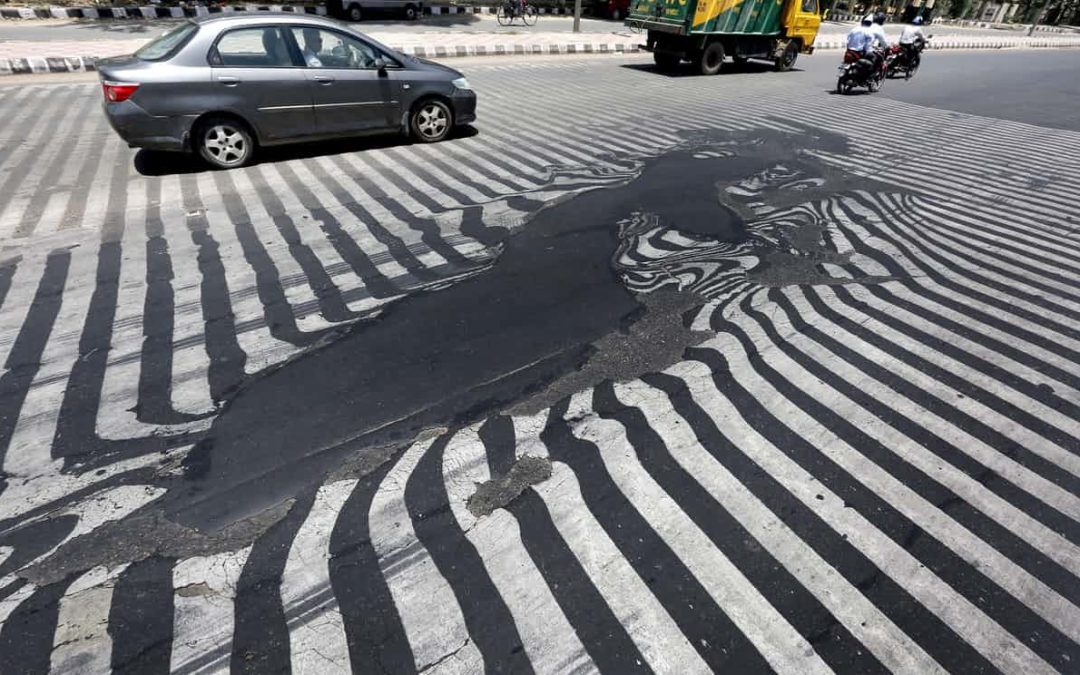SOURCE: The Guardian
DATE: August 13, 2018
SNIP: At 50C – halfway to water’s boiling point and more than 10C above a healthy body temperature – heat becomes toxic. Human cells start to cook, blood thickens, muscles lock around the lungs and the brain is choked of oxygen. In dry conditions, sweat – the body’s in-built cooling system – can lessen the impact. But this protection weakens if there is already moisture in the air.
A so-called “wet-bulb temperature” (which factors in humidity) of just 35C can be fatal after a few hours to even the fittest person, and scientists warn climate change will make such conditions increasingly common in India, Pakistan, south-east Asia and parts of China. Even under the most optimistic predictions for emissions reductions, experts say almost half the world’s population will be exposed to potentially deadly heat for 20 days a year by 2100.
Not long ago, 50C was considered an anomaly, but it is increasingly widespread. Earlier this year, the 1.1 million residents of Nawabshah, Pakistan, endured the hottest April ever recorded on Earth, as temperatures hit 50.2C. In neighbouring India two years earlier, the town of Phalodi sweltered in 51C – the country’s hottest ever day.
Several cities in the Gulf are getting increasingly accustomed to such heat. Basra – population 2.1 million – registered 53.9C two years ago. Kuwait City and Doha have experienced 50C or more in the past decade. At Quriyat, on the coast of Oman, overnight temperatures earlier this summer remained above 42.6C, which is believed to be the highest “low” temperature ever recorded in the world.
Those places already struggling with extreme heat are doing what they can. In Ahmedabad, in Gujarat, hospitals have opened specialist heat wards. Australian cities have made swimming pools accessible to the homeless when the heat creeps above 40C, and instructed schools to cancel playground time. In Kuwait, outside work is forbidden between noon and 4pm when temperatures soar.
But many regulations are ignored, and companies and individuals underestimate the risks. In almost all countries, hospital admissions and death rates tend to rise when temperatures pass 35C – which is happening more often, in more places. Currently, 354 major cities experience average summer temperatures in excess of 35C; by 2050, climate change will push this to 970.
As baselines shift across the globe, 50C is also uncomfortably near for tens of millions more people. This year, Chino, 50km (30 miles) from Los Angeles, hit a record of 48.9C, Sydney saw 47C, and Madrid and Lisbon also experienced temperatures in the mid-40s. New studies suggest France “could easily exceed” 50C by the end of the century while Australian cities are forecast to reach this point even earlier. Kuwait, meanwhile, could sizzle towards an uninhabitable 60C.

